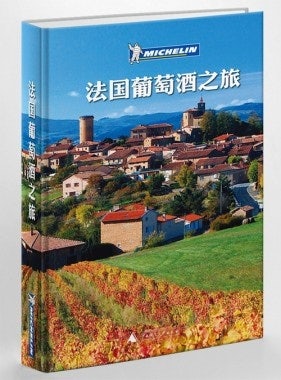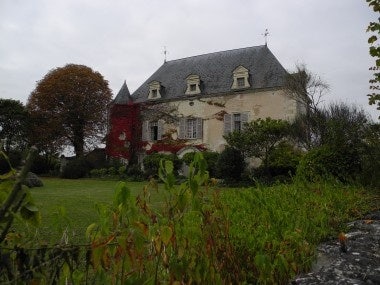France Recording More Than 15 Percent Rise In Chinese Tourists Annually#

"French Wine Tour," Michelin's first Chinese-language themed tour book
Jing Daily has previously highlighted the growing popularity of wine tourism among Chinese outbound travelers, a trend that's been eagerly jumped upon by wineries in Australia, California and France. This week, CNNGo writes that the French travel publisher Michelin, taking advantage of this increasingly lucrative niche tourism market, has just released its first Chinese-language theme tour guide, "French Wine Tour" (法国葡萄酒之旅). Via CNNGo:
The Green Guide gives detailed information on the most well-known French vineyards and their wines, from Bordeaux and Burgundy to Champagne and Cognac.
“We provide travel guides based on readers’ demand and according to the traveling habits and lifestyle of Chinese people,” noted Miao Xiangbo (苗祥波), director of Michelin Guide China Maps and Traveling.
“The book shows the other side of France and helps tourists to enjoy French wine culture in depth.”
The Michelin wine guide, which will be available soon online and in Xinhua book stores nationwide, has arrived just in time. China officially overtook Germany and the United Kingdom to become the biggest wine importer of Bordeaux last September.
Considering the rate at which Chinese demand for French wine is growing -- Chinese buyers purchased US$311 million worth of Bordeaux wine alone from July 2010 and June 2011, according to French Wine News -- an increase in wine tourism from China's tourists can't come soon enough. With the boom years of Japanese wine tourism, the 1980s and 1990s, long past, and competition from wine-growing regions in the United States, Australia, Italy and Spain becoming more intense, France is finding it can no longer depend solely on its traditional sources of wine tourists. China, then, is the natural new market.
But as in the wine trade, where China's wealthiest buyers have traditionally gravitated towards the likes of Château Lafite and Latour, it seems that the rising tide of Chinese tourists is currently benefiting Bordeaux most of all. As CNNGo notes:
Thomas Duroux, managing director of Chateau Palmer, said that 30 percent of visitors to his vineyard have been Chinese in the past six months, and they were looking for high-end wines with prestigious brands.
“The number of Chinese people in Bordeaux has increased tremendously -- of course, we received a lot of professionals, but we also see a lot of tourists,” added Duroux, who estimated a fast growth in the number of visiting tourists in the near future.
[Grand Hotel de Bordeaux and Spa general manager] Yan Vacher also anticipated wine tour to be the next trend among Chinese tourists to France because of the interest in learning about wine in China, and the fact that “Chinese travelers have just come to discover the region of Bordeaux.”

Chateau de Chaintres in Dampierre-sur-Loire
With the tastes of Chinese wine consumers, particularly younger and female drinkers, becoming significantly more diverse -- even at the high-end, where top Burgundy is starting to displace long dominant Bordeaux vintages -- can we expect Chinese wine tourists in France to continue to home in on Bordeaux, or will other regions prove attractive as well? Much of this depends on the way these tourists travel. Taking part in tour groups, older travelers and those with families, or starry-eyed tourists drawn to France because of films like "Eternal Moment" (将爱), will likely stick to Bordeaux.
However, other wine-growing regions in France are hopeful that independent travelers, sophisticated wine enthusiasts, and France-based Chinese students and professionals will prove a little more adventurous. This demographic presents huge potential opportunities for winemakers in Champagne, Alsace, Languedoc, Burgundy and the Loire Valley, regions long famous for quality wine but only recently becoming better known in China.
As Guillaume Roussy, head of Chateau-Midouin in the Loire Valley, told Jing Daily last month, since his region is “the first stop inland” for tourists visiting Paris, the Loire Valley stands to gain from more wine tourism among Chinese visitors. Still, Roussy added, as is the case for niche French luxury brands, it'll take time for China's newly global tourists to look beyond the "big names" like Bordeaux and Burgundy.